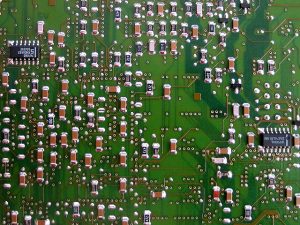The Bureau of Automotive Repair is an agency of the California State Government, and as an agency, it loves to throw around acronyms and bureaucratize. It’s enough to drive a station owner, operator, or technician crazy – there seems to be an acronym for everything, and a new twist or turn that can get even the most innocent technician into trouble with the BAR (to throw in an acronym – BAR, or Bureau of Automotive Repair). Here’s one we hear a lot: ISO‘s or Interim Suspension Order. As of summer, 2016, we’re hearing word on the street of reports of of ISO’s being issued for the new DAD / OIS system with allegations of clean plugging. The jumble of acronyms here is: DAD / OIS ISO. Here’s some deconstruction –
- DAD, or Data Acquisition Device, this refers to the computer-oriented device that transmits data about the vehicle being inspected.
- OIS, or On-Board Diagnostic Inspection System. This is bureaucratize for the system being used to “test” the vehicle against State of California SMOG standards.
Photo credit: Tom Held via Foter.com / CC BY
Basically the DAD (data acquisition device) sends data to the BAR (Bureau of Automotive Repair) and if the data doesn’t match up, “Houston, we have a problem.” Or, more accurately, “Houston, YOU have a problem).
In many science fiction movies, there’s that terrible moment when the humans realize that the computers are in charge, and the computers are making a muck of it. Nerds call this the “Singularity,” the moment when the computers are “in charge” because they’ve become “so intelligent.” Well, in this case the computers report to the BAR and then there are various data discrepancies that can cause YOU a lot of problems, because YOU as a human (along with an attorney) have to fight the bureaucracy to explain that, despite what the computers are saying, your ISO is invalid because of various data problems. You’d better know what you’re doing!
Among other vocabulary words, we’re hearing more and more of –
- DMV VIN – this is the VIN (Vehicle Identification Number) being entered by the SMOG inspector. Any discrepancy here between what the computer “sees” and what the technician “enter” can cause a problem.
- Cert ID – SMOG Check Certificate number issued.
- eVIN – this is the VIN issued electronically by the OIS (and, the possibility being that the “real” VIN and the “e” VIN don’t agree), and “Houston, YOU have a problem.”
- Protocol – this is the “type” of communication that was established with the vehicle by the OIS.
- PID Count – the number of parameter identifications (PID) available from the vehicle computer(s).
- Emission Related DTC’s – a reading of the vehicle trouble code(s) received by the OIS.
Here’s the rub in a nutshell: IF the computer transmitting to the BAR reports a discrepancy of any type amongst all these variables, THEN it’s possible that it will indicate some potential type of human error up to an including a possible fraud is being committed. What the BAR is alleging is that if the PID count, Protocols, and or eVIN does not match up with what the BAR is expecting to see, then, illegal inspections are occurring. This of course is a big assumption. Why? People change computers, reprogram cars without any knowledge of the technicians, etc., and computers make mistakes with data – the one computer reports one data point, and the other another. So the data arrives jumbled up in Sacramento, and the assumption is that the station or technician is malicious.
The reality for many station operators or technicians is that they then receive an ISO (Interim Suspension Order) and their livelihood is threatened while they attempt to straighten out this computer mess vis-a-vis the BAR. There’s an acronym for this, too: SNAFU – Situation Normal All F’d Up. If you are facing an ISO, give us a C A L L on the T E L E P H O N E at 800-561-9860 or email us.
